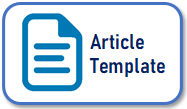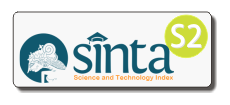Microfinance: Viable Approaches for Islamic Banking Implementation
DOI:
https://doi.org/10.14421/grieb.2015.023-03Keywords:
Islamic Microfinance, Islamic Banking, Poverty Alleviation, Risk Mitigation, Micro EntrepreneursAbstract
Islamic banks have very much engaged in debt financing businesses the same way and as much as their conventional counterparts do. Debt financing businesses, as widely implemented, were specifically targeted for and tailored to the needs of middle and upper income group of people. The low income people remain left out and forgotten in most banking businesses while microfinance instruments, which are meant to help the poor and needy, remain unpopular among the banking institutions. There is indeed increasing calls for Islamic banks to seriously consider this type of instrument as part of their religious obligation embedded under their Islamic identity. This paper demonstrated that microfinance instruments are viable for Islamic banks to consider despite the claims that the contracts are less secured and hence, too risky to embark in. A number of microfinance instruments based on Islamic concepts namely Musyarakah, Murabahah, Mudharabah, Ijarah and Qard al-Hassan as well as operational frameworks such as SPV and wakalah, were being proposed and discussed to pave ways for its implementation by the Islamic banks.Downloads
 Abstract viewed: 827 times
|
Abstract viewed: 827 times
|
 PDF downloaded = 594 times
PDF downloaded = 594 times
References
Abdouli, A. H., 1991. Access to finance and collaterals: Islamic versus Western banking, Journal of King Abdul Aziz University Islamic Economics, 3, 57-64.
Abdul Rahman, A. R., 2007. Islamic microfinance: a missing component in Islamic banking, Kyoto Bulletin of Islamic Area Studies, 1, 38-53.
Abdul Rahman, A. R., 2010. Islamic microfinance: an ethical alternative to poverty alleviation, Humanomics, 26, 284-295.
Ahmed, H., 2002. Financing microenterprises: An analytical study of Islamic microfinance institutions, Islamic Economic Studies, 9, 27-64.
Ali, A. E. E. S., 2014. Islamic Microfinance: Moving Beyond Financial Inclusion, IRTI Working Paper Series, Islamic Research and Training Institute: Jeddah.
Allen & Overy, 2009. Islamic Microfinance Report for the International Development Law Organization, International Development Law Organization. Available online: http://www.assaif.org/content/.../Islamic%20Microfinance%20Report.pdf [Accessed 25 June 2010].
Ayub, M., 2007. Understanding Islamic Finance, John Wiley & Sons: England.
Businessdictionary.com., 2015. Microfinance. Available online: http://www.businessdictionary.com/definition/micro-finance.html [Accessed 31 May 2015].
Dhumale, R. & Sapcanin, A., 1998. An application of Islamic banking principles to microfinance, Technical Note. Regional Bureau for Arab States, UNDP, in cooperation with the Middle East and North Africa Region, World Bank.
Dusuki, A. W., 2008. Banking for the poor: the role of Islamic banking in microfinance initiatives, Humanomics, 24, 49-66.
El-Komi, M. & Croson, R., 2013. Experiments in Islamic microfinance, Journal of Economic Behavior & Organization, 95, 252-269.
El Naggar, A. A., 1978. Islamic banks: A model and the challenge, in The Challenge of Islam (Ed.) Gauhar, A., Islamic Council Of Europe: London.
Gorton, G. B. & Souleles, N. S., 2005. Special Purpose Vehicles and Securitization, Working Paper. FRB Philadelphia.
Grameen Bank, 2010. The Nobel Peace Prize 2006. Available online: http://www.grameen-info.org/index.php?option=com_content&task=view&id=197&Itemid=197 [Accessed 25 June 2010].
Haron, S. & Wan Azmi, W. N., 2009. Islamic Finance and Banking System: Philosophies, Principles & Practices, Mc Graw Hill: Kuala Lumpur.
Hassan, S., Rahman, R. A., Bakar, N. A., Mohd, R. & Muhammad, A. D., 2013. Designing Microfinance Products for Islamic Banks in Malaysia, Middle-East Journal of Scientific Research, 17, 359-366.
Ibrahim, B.-E.-D. A., 2003. Poverty alleviation via Islamic banking finance to micro-enterprises (MEs) in Sudan: Some lessons for poor countries, in Sudan Economy Research Group Discussion Papers (Eds.) Wohlmuth, K. & Knedlik, T. University of Bremen: Bremen, Germany.
Iqbal, Z. & Mirakhor, A., 2007. An Introduction to Islamic Finance: Theory and Practice, John Wiley & Sons: Singapore.
Khir, K., Gupta, L. & Shanmugam, B., 2008. Islamic Banking: A Practical Perspective, Pearson Longman: Petaling Jaya, Selangor.
Obaidullah, M., 2008a. Introduction to Islamic Finance, International Institute of Islamic Business and Finance: India.
Obaidullah, M., 2008b. Role of Microfinance in Poverty Alleviation, Islamic Research and Training Institute, Islamic Development Bank: Jeddah.
Obaidullah, M. & Khan, T., 2008. Islamic Microfinance Development : Challenges and Initiatives. Islamic Research and Training Institute, Islamic Development Bank: Jeddah. Available online: http://www.imad.in/mf-obadullah1.pdf [Accessed 20 June 2010].
Saqib, L., Zafar, M. A., Khan, K., Roberts, K. W. & Zafar, A. M., 2015. Local agricultural financing and Islamic banks: is Qard-al-Hassan a possible solution? Journal of Islamic Accounting and Business Research, 6, 122-147.
Segrado, C., 2005. Islamic Microfinance and Socially Responsible Investments. Available online: http://www.gdrc.org/icm/islamic-microfinance.pdf [Accessed 30 May 2010].
Shahinpoor, N., 2009. The link between Islamic banking and microfinancing, International Journal of Social Economics, 36, 996-1007.
Siddiqi, K., 2008. Potential of Islamic microfinance in Pakistan. Master Thesis, Loughborough University.
Wilson, R., 2007. Making Development Assistance Sustainable Through Islamic Microfinance, IIUM Journal of Economics and Management, 15, 197-217.
Downloads
Issue
Section
License
Global Review of Islamic Economics and Business is licensed under a
Creative Commons Attribution-ShareAlike 4.0 International License



















